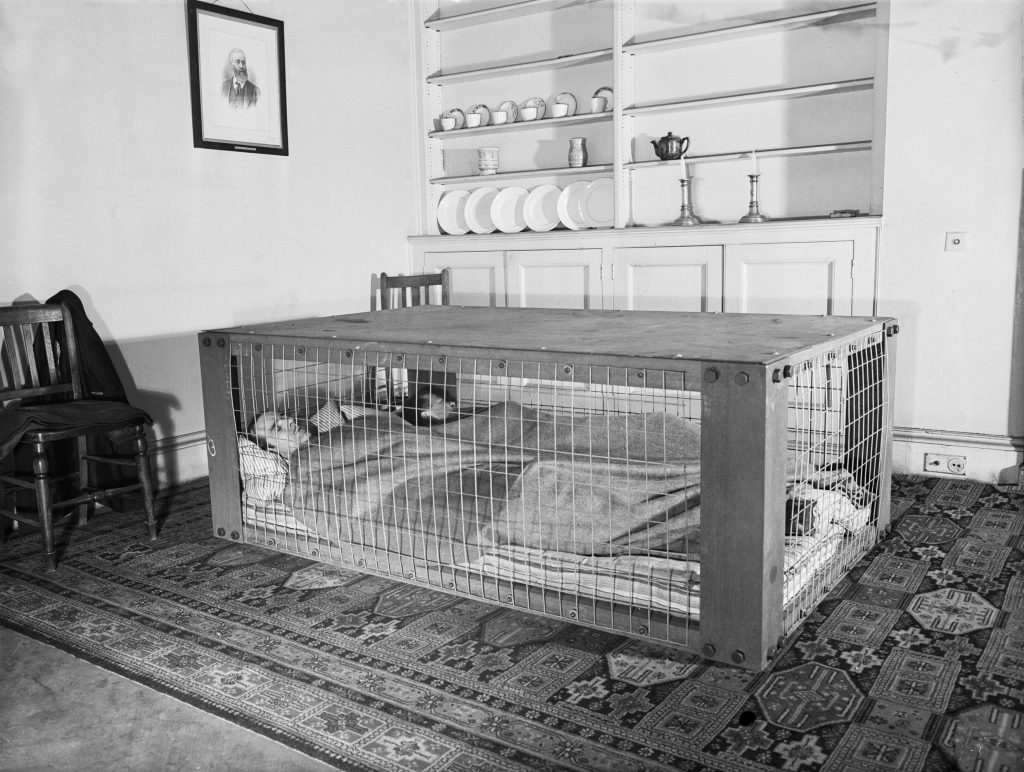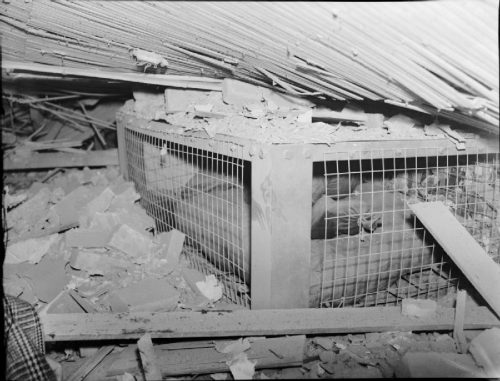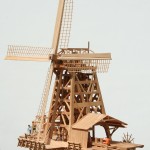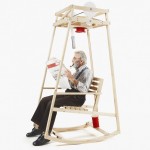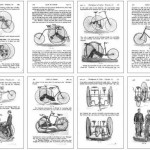In the UK during World War Two, due to the lack of house cellars it was necessary to develop an effective type of indoor shelter. The Morrison shelter, officially termed Table (Morrison) Indoor Shelter, had a cage-like construction beneath it, and was designed to be able to withstand the upper floor falling, of a typical two story-house undergoing a partial collapse.
The Morrison shelter was designed by John Baker and named after Herbert Morrison, the Minister of Home Security at the time. It was the result of the realisation that due to the lack of house cellars it was necessary to develop an effective type of indoor shelter. The shelters came in assembly kits, to be bolted together inside the home. They had a solid (3 mm) steel plate “table” top, welded wire mesh sides, and a metal lath “mattress”- type floor. Altogether it had 359 parts and had 3 tools supplied with the pack. The shelter was provided free to households whose combined income was less than £400 per year (equivalent to £24,000 in 2018).
It was impractical to produce a design for mass production that could withstand a direct hit, and so it was a matter of selecting a suitable design target that would save lives in many cases of blast damage to bombed houses. Examination of bombed buildings indicated that in many instances, one end wall of a house was sucked or blown out by a nearby blast, and the floor of the first storey pivoted about its other end (supported by a largely intact wall) and killed the inhabitants. The Morrison shelter was designed to absorb this energy by plastic deformation. Its design enabled the family to sleep under the shelter at night or during raids, and to use it as a dining table in the daytime, making it a practical item in the house.
Half a million Morrison shelters had been distributed by the end of 1941, with a further 100,000 being added in 1943 to prepare the population for the expected German V-1 flying bomb (doodlebug) attacks. In one examination of 44 severely damaged houses it was found that three people had been killed, 13 seriously injured, and 16 slightly injured out of a total of 136 people who had occupied Morrison shelters; thus 120 out of 136 escaped from severely bomb-damaged houses without serious injury. Furthermore, it was discovered that the fatalities had occurred in a house which had suffered a direct hit, and some of the severely injured were in shelters sited incorrectly within the houses.
From Wikipedia. Via Amateur Photographer UK.
